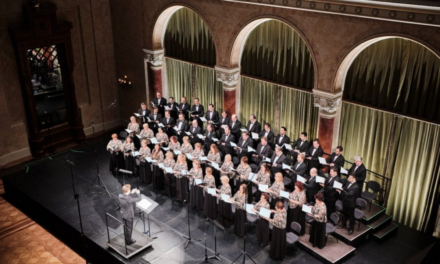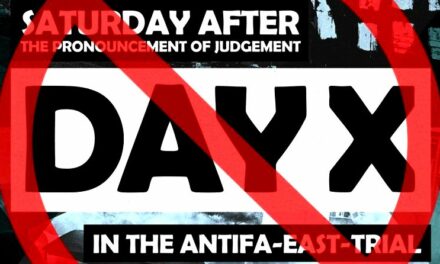University professor of history Enikő A. Sajti, an excellent expert on the issue, made supplementary and clarifying comments in a letter to the chapter on the communist genocide in the Southern Region, the summary part of the study by Zsolt Zétényi on the death victims of communism in Hungary. Given that this letter makes many valuable resources and knowledge more accessible, it is published with the consent of the writer of the letter due to its public interest nature.
"Dear Mr. Zétényi!
Unfortunately, I only read the very interesting Victims of the Communists 2 c. on the CÖF news portal, 2022plusz. his writing. Referring to me in connection with the victims in the southern region, he writes that "Szeged historian and university professor Enikő Sajti puts this number at around 5,000 people, supported by reliable data." Since there are no footnotes in your mentioned article, unfortunately I do not know which of my studies or books Mr. Lawyer is referring to, and for this reason the reader cannot verify this statement. I have indeed published several works on the reprisals committed by Yugoslav partisans against Hungarians, but each time I only presented and analyzed the claims of the related literature, i.e. the historiography of the issue, as I am convinced that even with the current state of research, we cannot describe not only concrete, but also nor "approximate" data on the number of victims.
I believe that the sentence you quoted appeared in the 5th issue of Rubicon 2009” Even colder days. Retaliation in the Southern Region" c. it is from my article, in which I quoted a number from the book "Mađari u Vojvodini" by a historian professor from Novi Sad, Aleksandar Kasaš, who published this data on the basis of a protocol created by the OZNA in 1945 containing the names of executed "war criminals" from Vojvodina . (At that time, those executed innocently, mostly without a court verdict, were also considered war criminals.)
Research gained a lot of momentum after the establishment of the Joint Hungarian-Serbian Academic Committee, of which I myself was a member. Regarding the results of the research, academician Károly Kocsis, the chairman of the committee, cautiously stated in 2018 that there were 7,000 "definitely believed to be Hungarian" victims of the partisans' retaliation in the Southern Region, and taking other factors into account, "in total, about 13-14 The number of Hungarian victims can be put at 000". The 7,000 people were identified by name, which is problematic in itself. The most recent Hungarian data on victims identified by name (7,489 people) can be found http://martirium.vmmi.org/ .
I would like to draw your attention to a related article of mine, which deals with contemporary and later estimates of the victims, as well as the results of the research so far: http://adattar.vmmi.org/fejezetek/1719/03_a_magyarok_elleni_partizan_megtorlas_a_delvideken.pdf
As you can see, in my view there is no "final" result on this issue - the work must continue.
I know that Mr. Lawyer understands the motive of writing my letter - the intention to protect my professional credibility, since this also guides your work.
Szeged, 19.04.2022. Sincerely,
Enikő A. Sajti DSc, professor emerita"
Below, we repeat the corresponding chapter of the series, supplemented with the corrected data.
The communist genocide in the south. 1944–45
In the fall of 1944, a new military authority, the Military Administration of Bánát, Bácska and Baranya and the OZNA ( Odelenje za Zastitu Naroda , i.e. People's Defense Department), a new military authority established from the invading Yugoslav communist partisan organizations, introduced a military administration in Vojvodina on October 17, 1944. After that, on the instructions of the communist party leadership (Yugoslav Népfelszabadító Anti-Fascist Council), they started ethnically based, collective criminal proceedings without a trial. of 1944-45 , the civilian population of Hungarian and German nationality, regardless of age or gender, was tortured and executed en masse in their places of residence or in concentration camps, accusing them of collective guilt in the Second World War . In many cases, the murders were committed with sadistic cruelty and in a barbaric manner.
In order to clarify the exact figures, in 2009 the government of Serbia set up a commission of inquiry, and so far they have been able to list 59,554 names in the official database of the victims. Among them, 27,367 Germans, 14,567 Serbs and 6,112 Hungarians were identified based on their nationality until 2014.
Research gained quite a momentum after the establishment of the Joint Hungarian-Serbian Academic Committee, of which Enikő A. Sajti was also a member. Academician Károly Kocsis, the chairman of the committee, stated in 2018 about the results of the research that there were 7,000 "definitely believed to be Hungarian" victims of the partisans' retaliation in the Southern Region, and taking other factors into account, "in total, the number of number of Hungarian victims". By the way, the 7,000 people were identified by Hungarian-sounding names. The most recent Hungarian data on victims identified by name (7,489 people) can be found http://martirium.vmmi.org/ .
At the same time, according to the representative of the Dülvidék advocacy organization, "There is no official estimate, the topic is not a topic of conversation these days. When the joint commission dissolved itself in 2016, the number of named victims was 15,000,... Since then, there have been new researches, and the number of 17,000 can be supported by the so-called archival researches..."
Enikő Sajti deals with contemporary and later estimates of the victims, as well as the results of the research so far: " Partisan retaliation against the Hungarians in the Southern Region The results and question marks of historiography " c. study.
The victims were not given the final rites even after their death: their bodies were thrown into mass graves. In more than one case, they were not even buried, they were just thrown into canals, cesspools, and collected in landfills. It happened that a mass grave was exhumed and the corpses were industrially processed in a textile factory. The remaining graves, with a few exceptions, were incorporated without a trace: houses and sports fields were built over them. The names of the executed, their possible crimes, the circumstances of their execution, and their resting place have not been officially disclosed. Afterwards, they were all declared war criminals, their property was confiscated, and their relatives were stigmatized.
The entire remaining Hungarian population of
three localities: Csúrog (Čurug) , Zsablya (Žabalj) and Mozsor (Mošorin) According to the announcement of the military command of Bánát, Bácska, Baranya, the Hungarians living in these settlements were collectively declared war criminals on the basis of Section 19 of the Work Organization Regulations. 1945 and 1948 , internment camps operated in the following localities: Gádor (Gakovo) , Tiszaistvánfalva (BačkiJarak), Körtés (Kruševlje) , Mollyfalva (Molidorf, Molin), Rezsőháza (Knićanin) , Szávaszentdemeter (Sremska Mitrovica), Szeghegy (Szikics, Lovćenac). . According to estimates, more than 70,000 civilians of German and Hungarian nationality (mostly old people, women and children) lost their lives in the camps as a result of starvation, freezing to death, epidemics, torture or execution.
According to some popular but unverified estimates - which can also be traced back to the works and sources of Tibor Cseres - the number of Hungarians killed in the winter of 1944-1945 is between 20,000 and 40,000 In fact, the history of the carnage in the Southern Region is the most uncertain in terms of the exact figures for the death victims of communism.
One of the reasons for the uncertainty of the data on the genocide committed against the Hungarians is the destruction of a significant part of the internal affairs documents of the time, which mostly well document the genocide, and another reason is that the majority of the internal affairs documents were not handed over to the archives, these documents cannot be researched to this day.
According to estimates that can be regarded as benchmarks, the number of victims can be estimated at a maximum of 20,000 people without proof, which is also confirmed by the historian Ignác Romsics.
Source:
Zsolt Zétényi: "Deadly victims of communism in Hungary in the period 1919-1990". c. part of the study.
http: РОЈ ЛИЦА У РЕГИСТРУ: 59554 (in Serbian). otvornaknjiga.komisija1944.mpravde.gov.rs, January 28, 2010 (Accessed June 27, 2017)
In.: Enikő A. Sajti's letter to the author. 04/19/2022.
Ms. Cseresnyésné Kiss Magdolna KESKENYÚTON Délvidéki Tragédiánk 1944-45 Communication from the President of the Foundation 2022 03 06 email letter.
http://adattar.vmmi.org/fejezetek/1719/03_a_magyarok_elleni_partizan_megtorlas_a_delvideken.pdf Change of Empire in Vojvodina (1944). Promena imperiere u Vojvodini 1944 godine. Ed.: Karol Biernacki, István Fodor. Southern Great Plain Centuries 28. Szeged-Zenta, 2010. 9-40. c. in a bilingual volume.
https://library.hungaricana.hu/hu/view/CSOM_Dae_28/?pg=10&layout=s
(Header photo: Josip Broz Tito (left). The brutal carnage of his partisans went unpunished. image source: youngpioneertours.com)












